There is a plan to destroy Iran, a plan drawn up together with Saudi Arabia by those within the American military-industrial complex who consider the Saudis an ally of the United States. Hillary Clinton, who has extensive ties to Saudi financiers, certainly intended to implement this plan. Judging from the repeated references to Saudi Arabia in statements on Iran made by both the Secretary of Defense, General “Mad Dog” Mattis, and Secretary of State Rex Tillerson, it is beginning to look like this plan might move forward even though there appeared to be substantively different plans for Iran back when General Flynn and Steve Bannon were the leading members of Team Trump. Whether or not this Saudi plan succeeds will have a deep impact on the future of Westerners and others in the wider Indo-European world. The question of Iran’s immediate future probably has more profound implications for the long-term survival of the Aryan heritage than any other contemporary crisis.
Surrounded by a dozen artificial states that do not predate the European colonial machinations of the 18th and 19th centuries, Irân is the only real nation between China and India in the East and the sphere of declining European civilization to the West and North. Shorthand for Irânshahr or “Aryan Imperium”, the country’s 55% Persian majority never referred to Iran as “the Persian Empire.” The classical Greeks coined that term and it stuck in the West. It is dangerously misleading because, while the Persians have been the most culturally dominant ethno-linguistic group within Iranian Civilization (playing a role comparable to the Han within Chinese Civilization), the Kurds, Ossetians, Baluch, and others are both ethnically and linguistically Iranian even if they do not speak the Persian language (referred to as Pârsi or, wrongly, as Fârsi in Western Iran and as Dari or Tâjiki in Iranian Central Asia).
The conflation of “Iran” and “Persia” has, for a number of years now, been enlisted as part of a plot to further erode the territorial integrity of Iran by reducing it to a Persian rump state. While the rootless globalist conspirators plotting to frame “Iran” as a conceptual construct of Persian Imperialism are certainly driven by economic and strategic considerations, their ultimate goal is the erasure of the very idea of Iran or Iranshahr. They see the revival of this idea as perhaps the single greatest threat to their broader agenda, and since the total failure of the Islamic Reform Movement of 1997–2009, just such a revival has been at the heart of an ultra-nationalist cultural revolution known as the Iranian Renaissance.
This movement strives for a rebirth of the Pre-Islamic worldview of Iranian Civilization, seeing the so-called “golden age” of Islam as an afterglow or abortion of what might have been had Iran continued its developmental trajectory as an Aryan nation. After all, the vast majority of scientists and engineers who were forced to write in Arabic under the Caliphate were ethnic Iranians whose mother tongue was Persian. In every respect, from Science and Technology, to Literature, Music, Art, and Architecture, so-called ‘Islamic Civilization’ acted as a parasite misappropriating a truly glorious Iranian Civilization that was already 2,000 years old before the Arab–Muslim invasion imposed Islam, and the genocidal Mongols cemented it (by crushing the Persian insurgencies in Azerbaijan, on the Caspian coast, and in Khorasan).

The Iranian Renaissance is based on the revival of ancient principles and ideals, many of which Iran shares with Europe both through their common Caucasian ancestry and through extensive intercultural exchange. This included the deep penetration of the Iranian Alans, Scythians, and Sarmatians into the European continent, and their eventual integration with the Goths in “Goth-Alania” (Catalonia) and the Celts in “Erin” (a cognate of “Iran”). Their introduction of the culture of knightly chivalry (Javanmardi) and grail mysticism into Europe left as deep an impact on the “Faustian” ethos of the West as the “Promethean” (really, Zoroastrian) ideals of the worship of Wisdom and innovative industriousness, which were introduced to Greece through centuries of Persian colonization.
The civilizational barrier between Iran and Europe has been very porous – on both sides. After the Hellenization of Iran during the Alexandrian period, Europe was almost Persianized through the adoption of Mithraism as the state religion of Rome. Partly as a consequence of the machinations of the Parthian dynasty and their black ops Navy in the Mediterranean, this was imminent by the time Constantine institutionalized Christianity – probably as a bulwark against Iran.
So it should not come as a surprise that many of the core elements of the ethos of the Iranian Renaissance seem strikingly European: the reverence for Wisdom and the pursuit of knowledge above all else; consequently, also an emphasis on industrious innovation leading to a utopian beautification and perfection of this world; a cultivation of chivalrous free-spiritedness, charitable humanitarianism, and broadminded tolerance; a political order that is based on Natural Right, wherein slavery is considered unjust and strong women are greatly respected.
But one must remember that to the extent that Iranshahr extended far eastward into Asia, these values were once also characteristic of Eastern Aryan culture – especially Mahayana Buddhism, which was created by the Iranian Kushans. Iran colonized northern India five times and the entire Silk Route into what is now Northwestern China was populated by Caucasian-looking Iranians until Turkic and Mongol conquests in the 11th and 12th centuries.
While the Iranian Renaissance wants to “Make Iran Great Again” by reviving this Indo-European legacy, and even by territorially reconstituting what people in our movement call “Greater Iran” (Irâné Bozorg), rootless globalists, Arab oil sheikhs, and their Islamist collaborators in Turkey and Pakistan want to erase Iran from the map altogether. Evidently this is not lost on the hundreds of thousands of Iranian nationalists who gathered at the tomb of Cyrus the Great on October 29th 2016 to chant the slogan “We are Aryans, we don’t worship Arabs!” The slogan is as blatantly anti-Islamic as possible within the limits of the law in the Islamic Republic. The prophet Muhammad and Imam Ali were, of course, Arabs, so the point is quite clear. It is also clear who these young people consider their true messenger, since the other most widely chanted slogan was, “Our Aryan Cyrus, you are our honor!”
Since the brutally crushed uprising of 2009, almost all Iranians have rejected the Islamic Republic. Many of them, especially the youth, are convinced that Islam itself is the problem. They have clandestinely converted to a Neo-Zoroastrianism that is indistinguishable from Iranian ultra-nationalism. Zarathustra in a winged disc, symbolizing the evolutionary perfection of the soul, known as the “Farvahar” is everywhere: on pendants, rings, and even tattoos (despite the fact that tattoos, which were ubiquitous among the Scythians, were banned by orthodox Zoroastrianism). Now even key elements within the regime, especially the Revolutionary Guard, are reading treatises on “the political thought of Aryan Imperium” that are extremely critical of Islam while glorifying ancient Iran.
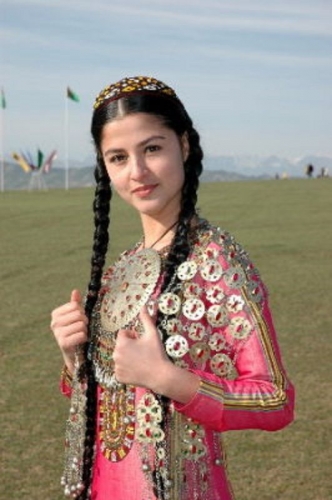
Meanwhile, the so-called ‘opposition’ in exile has been almost entirely corrupted and co-opted by those who wish to carve up what little is left of Iran. On the one hand you have the radical Leftists who actually handed Iran over to the Ayatollahs in 1979 before Khomeini turned on them, forcing those who escaped execution to go into exile. On the other hand you have the blindly loyal devotees of Crown Prince Reza Pahlavi, whose vision – or lack thereof – largely aligns with that of the leftists, at least insofar as it concerns the aims of the Globalists and Islamists.
Those in the Marxist and Maoist opposition to the Islamic Republic promote ethnic separatism, transplanting an anti-Colonialist discourse of “people’s liberation struggles” into an Iranian context where it does not belong. The Persians never lorded over anyone. We were humanitarian liberators. If anything, we were too humanitarian and too liberal.
Leftists speak of “the peoples of Iran” as if the Kurds and Baluch are not ethnically Iranian and as if a Turkic dialect were not imposed on the province of Azerbaijan, the Caucasian wellspring of Iran, by means of genocidal half-savage Asiatic conquerors. While claiming to be feminists and partisans of the proletarian revolution these leftists accept funding from Saudi Arabia, who wants to help them separate the partly Arabized oil-rich region of Khuzestan from Iran and turn it into the nation of Al-Ahwaz, with a considerable coastline on what they already refer to as “the Arabian Gulf.” Kurdistan, Azerbaijan, Al-Ahwaz, Baluchistan: these microstates, ostensibly born of leftist “liberation movements”, would be easy for rootless global capitalists to control. In at least two cases, Al-Ahwaz and ‘Free Baluchistan’, they would also be breeding grounds for the further spread of Islamist terrorism. Finally, they would leave the Persians divested of almost all of Iran’s oil and natural gas resources, and contain the rising tide of Aryan Identitarianism within a rump state of ‘Persia.’
The most well-armed and well-organized of these leftist groups is the Mojaheddin-e-Khalq (MEK), which also goes by the aliases People’s Mojaheddin of Iran (PMOI) and National Council of Resistance of Iran (NCRI). Their armed guerrillas essentially put Khomeini and the clerical establishment to power before being branded as heretics. Their response was to swear allegiance to Saddam Hussein and put at his disposal a few military units that defected during the Iran-Iraq War. This means that they de-facto accepted the Iraqi occupation of Khuzestan. Later, when they were forced to relocate to Iraqi Kurdistan, they made promises to the Kurds to support Kurdish secession from Iran. A whole host of prominent politicians in the United States and the European Union have been bribed into pledging their support for the group’s leader, Maryam Rajavi, including John McCain, Newt Gingrich, Rudy Giuliani, John Bolton, and the NeoCons.
The majority of the Iranian people view the MEK as traitors, and the fact that they are essentially a cult whose members – or captives – are as forcibly closed off from the outer world as North Koreans does not help either. While this means that they would never be able to effectively govern Iran, the MEK could be used as a catalytic agent of de-stabilization during a war against the Islamic Republic.
Here is where Crown Prince Reza Pahlavi comes in, together with his wing of the exiled Iranian ‘opposition.’ The globalist cabal and their Arab allies in the Persian Gulf (Saudi Arabia, Qatar, the UAE) intend to create a problem to which he is the solution. He is in their pocket.
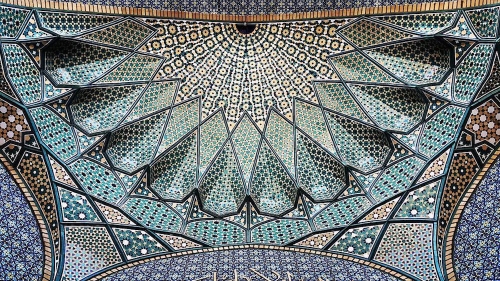
At a CFR meeting in Dallas in early 2016, which I exposed in a notorious interview with the Sweden-based independent journalist Omid Dana of Roodast (“the Persian Alex Jones”), Reza Pahlavi mocked the allegedly “overblown nationalist rhetoric” about the genocidal Arab-Muslim Conquest of Iran. He referred to this incomparable historical tragedy as something that, if it happened at all, is unimportant because it happened long ago. Really, he sees it as an obstacle to good neighborly relations with the Arab states of “the Gulf”. Oh yes, in interviews with Arab media he has referred to the Forever Persian Gulf as “the Gulf” so as to appease his wealthy Arab benefactors. Reza Pahlavi has also allowed representatives in his official media outlets to repeatedly do the same. He has even used the term in a context that implies Iran might surrender several islands in “the Gulf” with a view to better neighborly relations. (As if his father’s relinquishing of Bahrain was not bad enough!)
In fact, he has suggested that Saudi Arabia and other inhumane Arab governments ought to invest in Iran’s economy to such an extent that Iran would be so dependent on them that waging war against these nations would become impossible. Relatedly, and very embarrassingly, the Crown Prince asserted that his future Iran should not have nuclear weapons because he would be afraid to sleep at night in his palace, since if Iran were to develop atomic arms other rival nations in the region would have the right to do so as well and would aim their missiles at Iran.
What is worse than all of this rhetoric is the Prince’s very concrete plan to put the question of a federalization of Iran to a popular vote or nationwide referendum. This is not merely a proposal. He meets with individuals and groups who are promoting separatism and the further territorial disintegration of Iran, with the first stage being “education in the mother tongue” (rather than Persian) and regional autonomy in the context of a federal system. At the same time, he denounced as “Fascists” the Iranian patriots who, at a risk of being imprisoned or killed, assembled at the tomb of Cyrus the Great on October 29th of last year and chanted the slogan, “We are Aryans, we don’t worship Arabs!” This, despite the fact that some of the same protestors also chanted slogans congratulating the Crown Prince on his birthday – a mistake that they will never make again. He even made remarks that suggestively mocked supporters of the Persian Imperial Tradition.
Reza Pahlavi takes every opportunity to make it clear his real ideals are “liberal democracy” and “universal human rights”, Western concepts that he uncritically embraces without the least understanding of the fundamental problems with them as compared to our aristocratic Iranian political philosophy – which influenced, and is much more in line with, substantial Western political theories such as those of Plato, Aristotle, and Nietzsche.
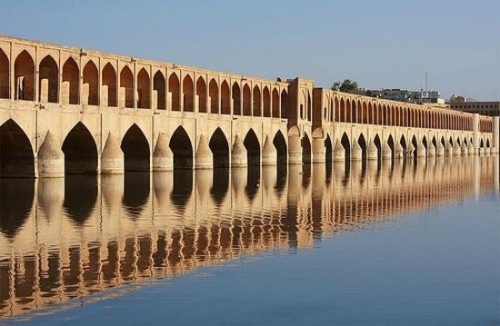
While his embrace of democracy and human rights extends to a popular vote on a federalization that leads to regional autonomy and eventually secession of numerous provinces, it apparently does not protect criticism of Islam. Also under influence from his neo-liberal Western handlers, and the leftist PC police in the West, and totally out of line with the popular sentiment among the Iranian youth, he has asserted that if Islam is to be insulted or if there is to be ‘Islamophobia’ in the future Iran, then it would be better for the Islamic Republic to remain in power. He has the gall to say this while branding his critics as agents of the Islamic Republic. When tens of prominent patriotic monarchists signed a “Last Warning” (Akharin Hoshdâr) statement to him in July of 2016, some of whom were his father’s closest advisors, he accused all of us of being agents of the Islamic Republic who falsified his claims and manufactured evidence (which was itself a patently false and slanderous claim).
We were not agents of the Islamic Republic, nor will we ever be shills of a Shi’a theocracy in its present form. But given the crisis that we face now, we need to consider a radical alternative to both the secessionist traitors in the Paris-based leftist opposition and the Shahs of Sunset in Los Angeles who are all too happy to have their Prince of Persia reign over the rump state that is left of Iran after “regime change.” I propose a grand bargain, a Bonapartist preemption of the coming reign of Terror.
Those who have followed my writings and interviews know that there is no harsher critic of Islam, in all its forms, than yours truly. I have not yet published my really serious and rigorous critiques of Islam, including and especially my deconstruction of the Shi’a doctrine. Nothing that I am about to propose changes the fact that I have every intention of doing so within the next few years.
Nevertheless, we are entering into what Carl Schmitt called a “state of emergency”. In this exceptional situation, wherein we are presented with an existential threat to Iran, it is important to recognize the difference between ontological or epistemological questions and the kind of friend-enemy distinction that is definitive for political thought in the proper and fundamental sense. Iranian nationalists have friends within the system of the Islamic Republic, and Lord knows we have plenty of enemies outside of it.
That young Revolutionary Guard (Pasdaran) officer from Mashaad who recites Hafez while patrolling the Iraqi border and waiting to be murdered by Kurdish separatists, but whose own mother is a Kurd, and who goes with his Persian father to worship at the shrine of Imam Reza while wearing a Farvahar around his neck, is not only a friend he is the brother of every true Iranian patriot. It was not the Pasdaran who shot and butchered young Iranians to put down the revolt of 2009, it was paramilitary thugs beholden to Supreme Leader Ali Khamenei – who is now on his deathbed.
We need to think about the future. The very heart and soul of Zarathustra’s teaching was his futurism, his emphasis on evolutionary innovation. If he were alive today, he certainly would not be a Zoroastrian. Frankly, even if he had been alive during the Sassanian Empire, he would not have been a Zoroastrian in any orthodox sense.

The Iranian Renaissance holds up the Sassanian period as the zenith of Iran’s history, “the climax before the dramatic decline.” But the two greatest heretics, from the standpoint of Zoroastrian Orthodoxy, had the backing of the Sassanian state. Shapur I was the patron of Mani, who created a syncretic world religion in which Gautama Buddha and the Gnostic Christ were seen as Saoshyants (Zoroastrian World Saviors) and the legitimate successors of Zarathustra. Manichaeism spread all the way to southern France in the West, where it sparked the Holy Inquisition as a reaction against it, and China in the East, where Mani was referred to as “the Buddha of Light” and his teaching influenced the development of Mahayana Buddhism. The libertine esotericist Mazdak, whose socialist revolution I would classify more as national-bolshevist than Communist, was given the full backing of the Sassanian Persian Emperor Kavad I. Even Khosrow Anushiravan, who crushed the Mazdakite movement, was not any kind of Orthodox Zoroastrian. He was a Neo-Platonist, who invited the remains of the Academy to take refuge at Iranian libraries and laboratories such as Gondeshapur after Justinian closed Europe’s last universities.
Moreover, the evolution of the Iranian spiritual tradition founded by Zarathustra did not end with the Islamic Conquest. The Iranian Renaissance condemns Mazdak unequivocally, and yet Babak Khorrdamdin is regarded as a hero of nationalist resistance to the Arabian Caliphate. But the Khorramdin partisans of Azerbaijan were Mazdakites! A clear line can be drawn from the Mazdakite movement, through the Khorramdin, and into esoteric Shi’a groups such as the Nizari Ismailis or Order of “Assassins” as they are widely known in the West. Fighting against both the Caliphate and the Crusaders simultaneously, there has never been a greater champion of Iranian freedom and independence than Hassan Sabbah. Nor did his brand of Shi’a esotericism decline with the Sevener or Ismaili sect.
There are still, in Iran today, putatively Shi’a clergy who owe more to Suhrawardi, via Mullah Sadra, than they do to anything that Imam Ali actually preached. By the time of the Sixth Imam, Ja’far al-Sadiq, the Shi’a faith was co-opted by Iranian partisans struggling against the Sunni Caliphate. The kind of Shi’a doctrine that some of Ayatollah Khomeini’s colleagues attempted to impose on Iran in 1979 represented a radical reconstruction of early Arab Shi’ism, not the kind of Shi’a esotericism that birthed the Safavid Dynasty. The latter allowed Iran to reemerge as a distinct political state set apart from, and against, the Sunni Ottoman Caliphate and a Mughal Empire that had also declined into Islamic fundamentalism after Akbar’s Persianate literature and philosophy proved an insufficient bulwark against this. Some of these Persianate Shi’a are at the highest levels in the power structure of the Islamic Republic. They need to be welcomed into the fold of Iranian nationalism, even into the fold of the Iranian Renaissance.
The Italian Renaissance reached back to Pagan Rome for the sake of a civilizational revitalization, but it did not abolish Christianity. Neither did Benito Mussolini when he adopted, as his explicit aim, a second Italian Renaissance and a revival of the Roman Empire. Rather, Il Duce recruited Roman Catholicism as a reliable ally in his valiant struggle against rootless capitalism, because he knew that Roman Catholics were “Roman” – even in Argentina.
Likewise, today, Shi’a are somehow culturally Iranian, even in Turkic northern Azerbaijan, Arabic-speaking Iraq and Bahrain, not to mention northwestern Afghanistan, where Persian remains the lingua franca. If Neo-Zoroastrians, both in Iran and in the parts of Kurdistan currently outside of Iran’s borders, were to ally with Persianate Shi’a it would do more than shore up Iran’s territorial integrity. It would establish a new Persian Empire, providing central Iran with numerous Shi’a buffer zones and forward positions while, on the basis of Iranian nationalism, also reincorporating areas that are ethno-linguistically Iranian but not Shi’a – such as greater Kurdistan and Tajikistan (including Samarkand and Bukhara).
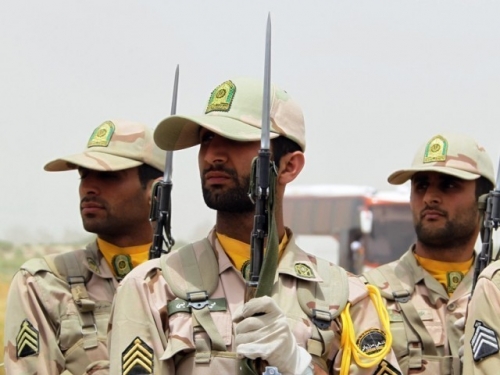
What I am proposing is more than a military coup within the Islamic Republic. The label of “Bonapartist” is only partly accurate. We need a group of officers in the Pasdaran who recognize that Timocracy, as Plato called it, is only the second best form of government and that their rule will need to be legitimated by a philosopher king and a council of Magi with the intellect and depth of soul to use state power to forward the Iranian Renaissance that is already underway. Ironically, if we separate the political form of the Islamic Republic from its content – as a good Platonist would – the regime’s anti-democratic and illiberal core structures are strikingly Iranian. The Guardian Council (Shorâye Negahbân) is the Assembly of the Magi and the Guiding Jurisprudent (Velâyaté Faqih) is the Shâhanshâhé Dâdgar who has the farr – who is rightly guided by the divine glory of Wisdom. This should be no surprised since, after all, Ayatollah Khomeini borrowed these concepts from Al-Farabi, who is still, deep down, an Aryan.
The Pan-Iranist Party, with its origins in the National-Socialist Workers Party (SUMKA) of early 1940s Iran, is a key element in this stratagem. Famous for its very vocal parliamentary opposition to Mohammad Reza Shah Pahlavi’s relinquishing of Bahrain in 1971, the ultra-nationalist (i.e. to the Right of the Shah) loyal opposition of the Pahlavi regime could become the loyal opposition of the Islamic Republic if it were legalized after a coup d’état by those within the Revolutionary Guard who understand the value of Iranian nationalism in confronting the imminent existential threat to Iran.
Unlike all of the other opposition parties, the Pan-Iranist Party’s underground subsistence has been just barely tolerated by the Islamic Republic. Although it is technically illegal, and cannot field candidates in elections, the regime has not crushed it either – because there is no question about the party’s loyalty to Iran. The party has extensive connections to both the intellectual leadership of the Iranian Renaissance and the more patriotic members of the Shi’a clergy. If it were the only legal opposition party, all Iranian nationalists would vote for it and, within a single election cycle, or two at most, the Pan-Iranists would secure a majority in parliament. Their first piece of legislation ought to be something with great symbolic power and little chance of backlash from the remaining military-industrial complex of the Islamic Republic: the return to the Lion and Sun as Iran’s legitimate national flag (one of the Party’s stated goals).
The Lion and Sun epitomizes the ambiguity of Iranian identity. Shi’a claim that it is a zoomorphic representation of Imam Ali, “the Lion of God” (Assadollâh) and that the sword wielded by the lion is the Zulfaqâr. The Islamic Republic replaced the symbol because its fundamentalist founders knew this to be false. The Lion and Sun is an exceedingly ancient Aryan standard, which probably represents Mithras or the Sun rising into the zodiacal house of Leo.

Moreover, Neo-Zoroastrians are wrong to think that the curved sword is an Islamic addition (and consequently that it ought to be replaced by a straightened sword). Rather, the lion’s sword is the harpe, which was the symbol of the fifth grade of initiation in Mithraism, known as Perses. Perses was the son of Perseus, the progenitor of the Persian Aryans. He severs the Gorgon’s head with a harpe sword. Gorgons were sacred to the Scythians, the tribal rival of the Persians within the Iranian world. Perseus holding the severed head of Medusa is a symbol of his having seized her power (her Shakti) while remaining human (without turning to stone). But yeah, sure, it’s Imam Ali.
In the new Iran, Neo-Zoroastrians are going to need to tolerate the mass mourning rituals of Moharram and Ashura, after all their true origins are in the ancient Iranian mourning processions for the martyrdom of Siyâvosh. Meanwhile, Shi’a are going to have to put up with Farvahar-tattooed Neo-Zoroastrian women who have been so antagonized by the Islamic Republic that they want to jump naked over Châhâr-Shanbeh Suri bonfires lit by burning Korans.
Unlike under Reza Shah Pahlavi II, and the proposed Arab Republic of Al-Ahwaz, there will be no criminalization of ‘Islamophobia’ in nationalist Iran. Actually, the Shi’a component of the new regime will serve to legitimate Iran’s alliance with European nationalists fighting the fifth column of the new Sunni Calipahte in Paris, London, Munich, and Dearborn. The hydra’s heads are in Saudi Arabia, Turkey, and Pakistan. Mithra’s Lioness will sever these heads with her harpe. For the first time since the Fatamid Dynasty of the Assassins, Mecca and Medina will be governed by Shi’a mystics. Persians will celebrate at Persepolis.
There is no doubt about it. The time has come for Bonapartist Iran – the Aryan-Islamic, Religious-Nationalist assassin’s fortress of resistance against the rootless globalists, where, “No-thing is true, and everything is permitted.” We are left with only one question, “Who is the Persian Napoleon?”



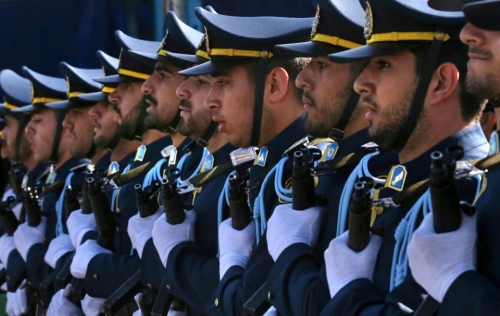

 del.icio.us
del.icio.us
 Digg
Digg
Les commentaires sont fermés.